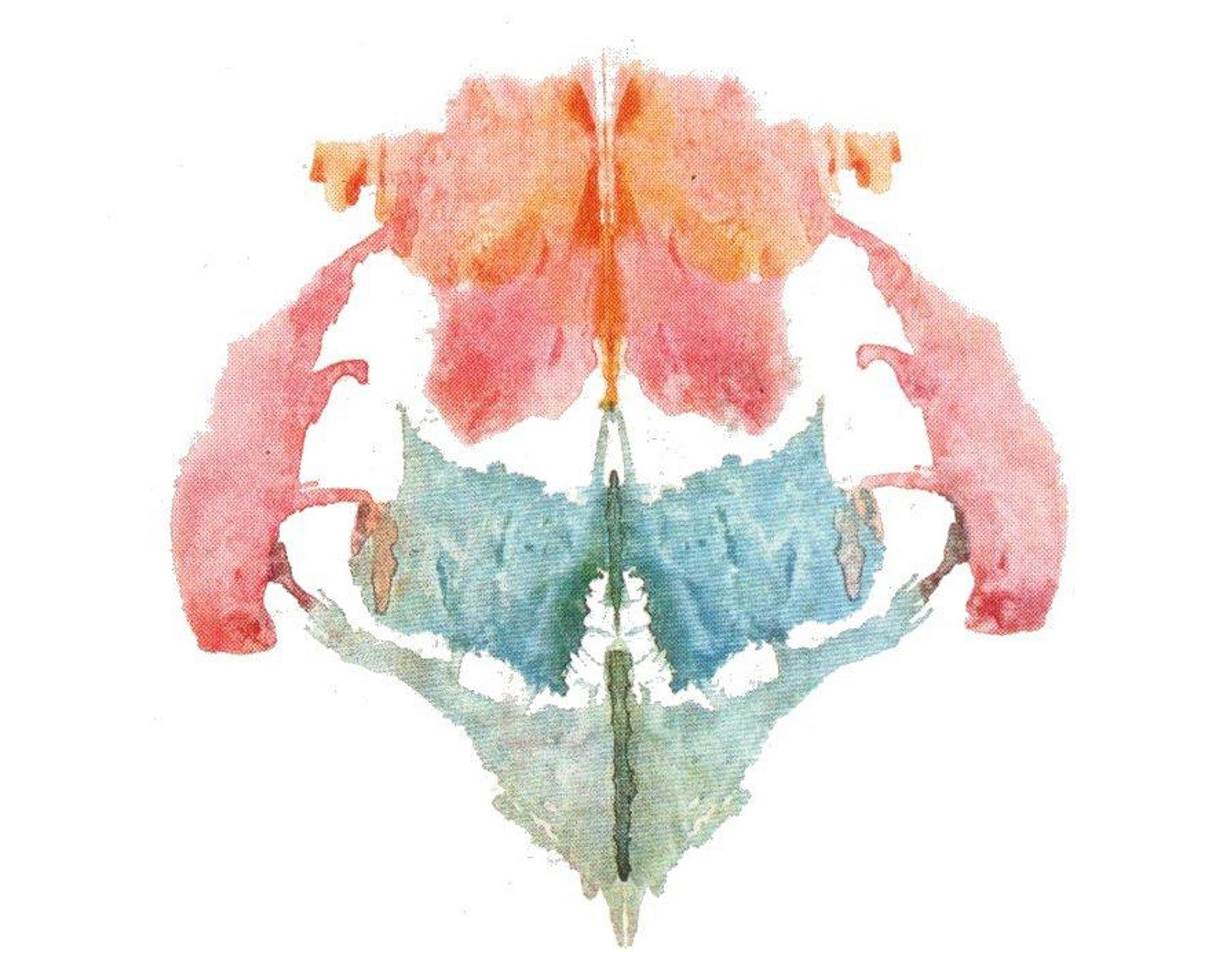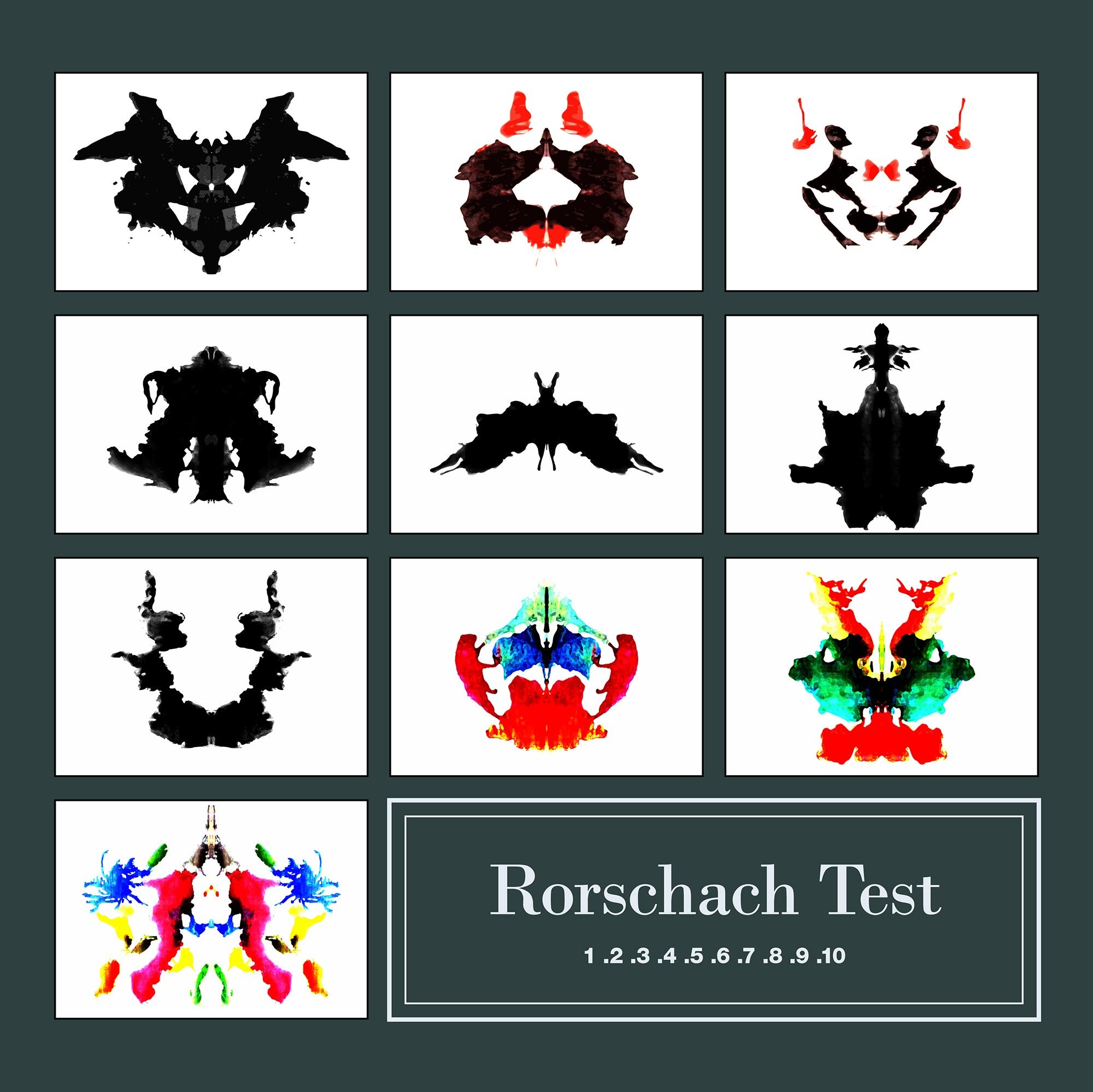Have you watched a movie or a TV show where a character is examined psychologically? If so, it is often shown that the character is asked to examine a piece of paper with blobs on it and describe what they see.
Made famous by entertainment media, this is a depiction of a genuine psychological test known as the Rorschach test.

What is a Rorschach test?
- The Rorschach test employs a series of ten bilaterally symmetrical inkblot cards, of which some are black or gray, and others could contain applications of color.
- The test taker is asked to provide their perceptions or perspectives on the presented ambiguous inkblot images.
- This test was designed to look for patterns of thought disorder in schizophrenia and has evolved to include other areas, like personality, emotional disorders, and intelligence.
- The Rorschach has been standardized using the Exner system and is effective in measuring depression, psychosis, and anxiety.
History
The Rorschach Inkblot Test was developed in 1921 by a Swiss psychologist named Hermann Rorschach (pronounced “ROAR-shock”).
History states that one of Hermann’s favorite games when he was a child, was called Klecksography, which involved creating inkblots and creating stories or poems about them. He thoroughly enjoyed the game so much that his school friends nicknamed him Klecks, the German word for inkblot.
Hence, Hermann’s strong interest in inkblots continued into adulthood. Contrary to popular perception, it is essential to note that the images were not simple blots of ink spotted on a piece of paper folded in half and opened again.
Rather, Rorschach used his artistic skills to refine and enhance his final inkblots so that each contained carefully placed contours to suggest objects or specific images to most people.

Hermann’s interest in perceptual operations contributed to what people saw more in than in the content of those judgments. He began working in a psychiatric hospital and experimented with forty or more inkblots for his patients between 1917 and 1920.
Hermann noticed that individuals with schizophrenia responded to the blots differently from patients with other diagnoses or disorders. This made him ponder if the inkblots could be used to create profiles for different mental disorders.
Therefore, perhaps inspired by his favorite childhood game and his studies of Sigmund Freud’s dream symbolism, Hermann Rorschach developed a systematic approach to using inkblots as an assessment tool to evaluate cognition and personality and to diagnose certain psychological conditions, including schizophrenia.
Ultimately, he selected fifteen inkblots as the most optimal for evoking and distinguishing personality characteristics. From 1919 to 1920, Hermann was looking for a publisher to release his findings with the 15 inkblot cards he regularly used.
But due to printing costs, the search was difficult to find a publisher to publish all 15 inkblots. Finally, he found a publisher in 1921 who was willing to publish his inkblots, but only ten of them. Hermann reworked his manuscript and included only 10 of the 15 inkblots.
Why the Rorschach Test is Unique
Most personality tests are objective in that they have standard methods of administration and scoring. However, in the late 1930s, the Rorschach was classified as a projective test.
The term applied to many tasks that could be used for personality assessment, like asking people to tell imaginative stories that relate to specific images – sound familiar?
The idea was that these tasks forced people to project and put forward distinctive and interesting aspects of their personality when completing an activity that does not include much external guidance.

Upon presentation of each card, the psychologist asks the client, “What might this be?”
The basic idea involves the test taker projecting their thoughts and feelings on what seems to be ambiguous and meaningless images, and the interpretation falls within the realm of the tester’s judgment.
The mind works hard to impose meaning on the image – the entire sense of the pictures is generated solely by the mind. Therefore, by asking the test taker to describe what they see in the inkblot, they genuinely tell you about themselves and how they project meaning onto the real world.
On average, it takes about 1.5 hours to administer and score the test.
Again, projective tests are contrasted with objective personality tests, which refer to self-rating questionnaires.
Individuals indicate whether oral descriptions are characteristic of them using an established set of response options (i.e., true or false).
Scoring
So now that we have an underlying understanding of how the test is administered, what exactly do interpreters and psychologists of the Rorschach test look for when they analyze the patient’s responses to the inkblots?
The actual content of the answers given is one thing, but the other factors are essential, too.
Content
The content refers to the name or class of objects used in the patient’s responses. Some standard contents include:
- Nature: anything weather-related or even astronomical or space-related. Including the sun, planets, water, and rainbows.
- Animal Feature: an incomplete animal feature. Including the claw of a crab, a cat’s head, bat wings, and bird beaks.
- Whole Human: a complete human figure.
- Human Feature: an incomplete human form or feature. Including legs, heads, or a body with a specific part, like a person without a head.
- Fictional/Mythical Human Detail: an incomplete human figure with fictional or mythical features. Including the wings of an angel or a centaur.
- Sex: anything involving any activity of a sexual nature, sex organs, or sexual reproduction. Including intercourse or breasts.
Determinant
Determinants are one of the most complex aspects of scoring the Rorschach test.
This is where the examiner/psychologist considers the reasons why the patients see what they see. Here we learn about what inkblot features helped the test taker determine their response and how.
There are five identified yet broad categories of inkblot determinants that the patient could be responding to:
- Form
- Movement
- Color
- Shading
- Pairs & Reflections
Location
Addressing the location of the patient’s response is another element of scoring in the Rorschach test. The “Location” refers to how much of the inkblot the patient used to depict an image.
- W: means the whole inkblot was used to depict an image.
- D: means a commonly described part of the blot was used.
- Dd: means an uncommonly described or unusual detail was used.
- S: means the white space in the background was used.
Rorschach Test Interpretation
Once every card has been shown and the psychologist correctly codes each response, an interpretative report is created based on the patient’s scores. The report seeks to integrate the findings from across all reactions from the test.
Therefore, one outlying answer is not likely to impact the test’s conclusions overall.
Since many people respond to the inkblots in a complicated and detailed yet, the scoring system utilizes the concept of blends to account for complex answers that seem to take into account many objects or the way used to describe the thing.
The organizational activity of the response assesses how well-organized the reaction from the patient is. And the form quality is evaluated, like how well the answer fits the shown inkblot.
An example would be if the inkblot looks like a bear, and the patient describes a bear. This would be an ordinary form quality, which is acceptable and not wildly imaginative.
Interpreting a Rorschach report can be a complex process. It does require a general knowledge of personality dynamics and considerable experience with the method of the Rorschach test precisely.
The psychologist will begin by examining the validity of the trial, along with stress tolerance and the number of resources that are made available to the patient versus the demands requested upon the individual at the time.
Next, the psychologist examines the cognitive operations of the patient, along with their perceptual accuracy, goal orientation, self-concept and interest, ability to control their emotions, flexibility of ideas and attitudes, and relationships with others.
Several particular indices are used less often to distinguish suicidal ideation, depression, and other concerns.
Typically, these can be more quickly assessed through a clinical, psychological interview, but the Rorschach test can help flesh out areas in a patient where some questions do remain.
In addition to the official scores, the interpretation of the Rorschach test is also based on behaviors expressed during the actual test-taking time, consistent or unique themes in the responses, patterns across the scores, and extraordinary idiosyncratic perceptions.
Also, a fast response to the images could indicate being at ease with others and being comfortable in social situations and relationships.
And, of course, a delayed response could reveal that the individual struggles with social situations, interactions, and relationships.
Conclusion
We must clarify that the Rorschach test, while intriguing, is not a magical sense of insight into an individual’s personality.
It is an empirically sound project testing measure backed by four decades of modern and past research, on top of the already existing four decades since the test’s initial publication by Hermann Rorschach in 1921.
By asking people to express what they view in a simple yet unique set of ten inkblots, individuals can often express a little bit more of themselves than their conscious selves might intend.
While the Rorschach test could be considered a relic by modern psychologists today and may not be the perfect tool, it continues to be used widely, particularly for identifying and diagnosing schizophrenia – which was Hermann Rorschach’s true intention for this test.
The Rorschach inkblot test is very much still used in various settings, including hospitals, schools, and courtrooms. And it still leads to better insights into the underlying motivations of the person’s current behaviors and issues.
References
Exner, J. E. (2002). The Rorschach: Basic foundations and principles of interpretation (Vol. 1). Hoboken, NJ: Wiley.
Piotrowski, Z. A. (1987). Perceptanalysis: The Rorschach method fundamentally reworked, expanded and systematized. London, UK: Routledge.
Rorschach, H. (1921). Psychodiagnostik. Bern: Bircher (Hans Huber Verlag, Trans., 1942).
Weiner, I. B. (2003). Principles of Rorschach interpretation. Mahwah, N.J.: Lawrence Erlbaum.


